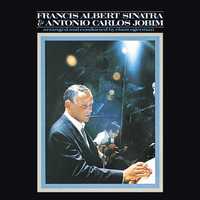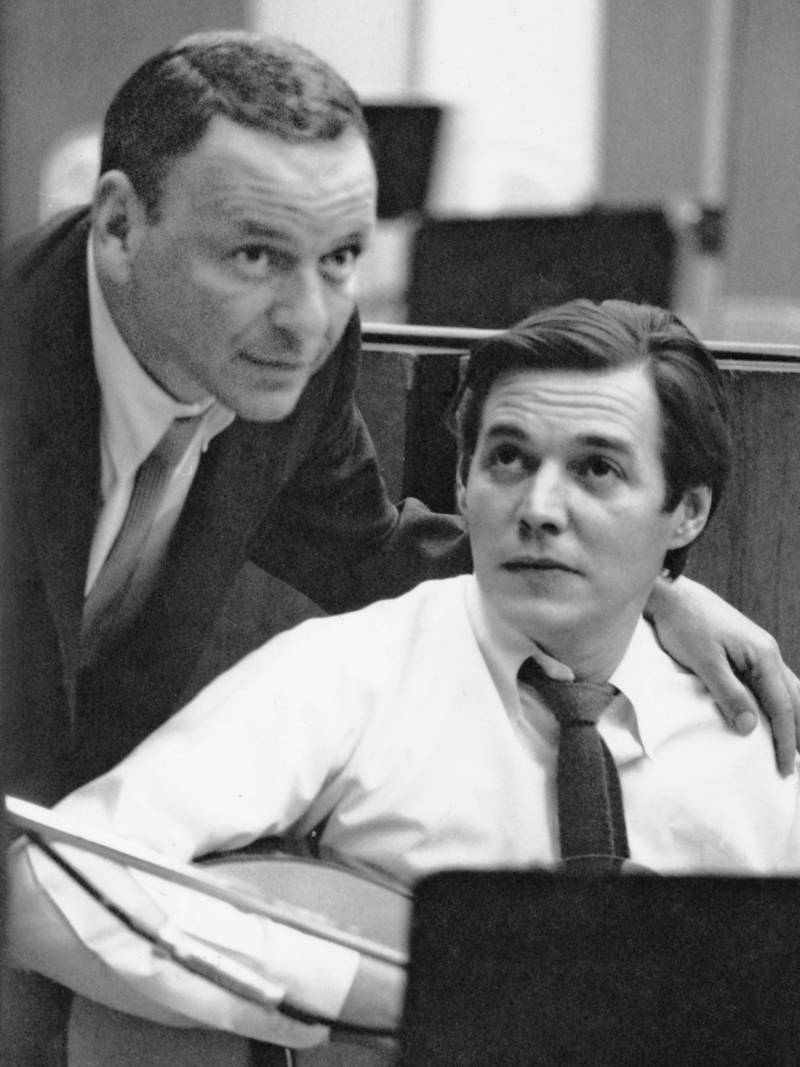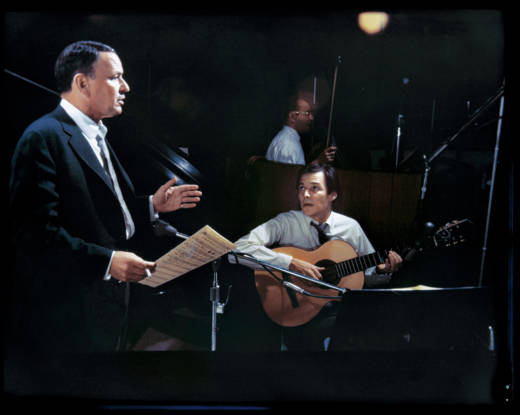Frank Sinatra was well into his Rat Pack era, the reigning American embodiment of masculine suavity and aplomb, when he teamed up with a maestro of Brazilian music to make one of the most exquisitely tender albums of his career. That album, Francis Albert Sinatra & Antonio Carlos Jobim, has lost none of its luster since it was first released 50 years ago. In fact, a newly remastered anniversary edition extracts additional depth from Claus Ogerman’s orchestrations, which frame Sinatra’s voice like a Rolex on a velvet cushion.

The album, recorded in Hollywood in the winter of 1967, captures both Sinatra and Jobim at an apex, flush with creative and popular success. Sinatra was coming off a knockout run of albums on his Reprise label — including Sinatra at the Sands, recorded with the Count Basie Orchestra, and That’s Life, which yielded an unstoppable single, “Strangers in the Night.”
Jobim, a pianist and guitarist as well as a composer, was the beating heart at the center of a worldwide bossa nova craze, following the success of Getz/Gilberto. A joint effort of the American tenor saxophonist Stan Getz and the Brazilian guitarist and singer João Gilberto, that album also served as a showcase for Jobim’s songs, including “The Girl From Ipanema,” a runaway smash.

The 50th anniversary edition of Francis Albert Sinatra & Antonio Carlos Jobim has just been released in various formats, including two vinyl packages. And along with the music from the original album, it includes two previously unreleased tracks: A live medley from a television special, and part of a session reel for “The Girl From Ipanema,” which Sinatra and Jobim sing as a duet.
“Don’t let it run away, fellas, with the tempo,” Sinatra cautions at the top of the first take. “Just hold it down, let it settle down. Because it’s got a lot of — it’s got a gang of words.” After the take is finished, he calls for another one, “right away.” His decisive brusqueness strikes a jarring contrast to the singing, which is as delectably airy as a soufflé.

9(MDAxOTAwOTE4MDEyMTkxMDAzNjczZDljZA004))

